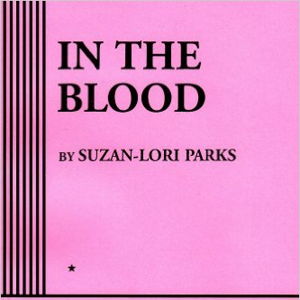
Overview
Synopsis
It would be reductive to call In the Blood simply a modern adaptation of Nathaniel Hawthorne’s classic, The Scarlet Letter, though the similarities are too great to overlook. Instead it seems that Suzan-Lori Parks has taken on The Scarlet Letter as a structural framework for her own drama, a road map for allegory. The main character is called Hester, La Negrita. She has five children, each from different, and notably absent, fathers. The family of six live in destitute poverty beneath a bridge, where Hester tries to learn how to read and goes hungry so that her children can eat. The playwright calls for six actors to portray a total of eleven characters and Hester is the only one who is not double cast. The children are written to be played by adult actors, who also portray a welfare agent, a doctor, a reverend, Hester’s first love Chilli, and Amiga Gringa, a poor white neighbor who visits the family often. Parks’ idiosyncratic modern writing style is exemplified in this play: her use of all caps, parenthesis, and double parenthesis is almost architectural on the page. She also employs her own vocabulary of stage directions, timing, and emphasis notations, which are so unique they merit an “Author’s Elements of Style” page with the published edition. Nevertheless, the author presents us with an open text, not controlling in its expression but subtle in its shades of complexity. Much like the work of Bertolt Brecht, In the Blood thrusts contradictions into the spotlight, exposing the conflict between human desire and self-interest in a totally eclectic mise en scène which mixes drama, poetry, and song. A prologue and final scene bookend the action with the ensemble together against Hester, evocative of a Greek chorus. The nine scenes are split into two acts, and punctuated throughout by five “Confessions.” Each confession takes the form of a spoken word monologue delivered by those who insist they mean to help Hester and her family, but ultimately they each describe a sexual encounter with her for their own selfish gratification. A merciless and brutal drama, In the Blood offers at the same time a critical portrayal of the treadmill of poverty and a powerful allegory for the subjugation of African-American culture in an institutionally racist system.
Show Information
Context
Plot
Characters
| Name | Part Size | Gender | Vocal Part |
|---|---|---|---|
|
Lead |
Female |
|
|
|
Supporting |
Male |
|
|
|
Supporting |
Female |
|
|
|
Supporting |
Male |
|
|
|
Supporting |
Female |
|
|
|
Supporting |
Male |
|
Songs
A song with an asterisk (*) before the title indicates a dance number; a character listed in a song with an asterisk (*) by the character's name indicates that the character exclusively serves as a dancer in this song, which is sung by other characters.
Monologues
Scenes
Key Terms
Sorry! We do not currently have terms for this guide.
Videos
Quizzes
Sorry! We do not currently have quizzes for this guide.
Themes, Symbols & Motifs
Sorry! We do not currently have learning modules for this guide.
Quote Analysis
Sorry! We do not currently have learning modules for this guide.